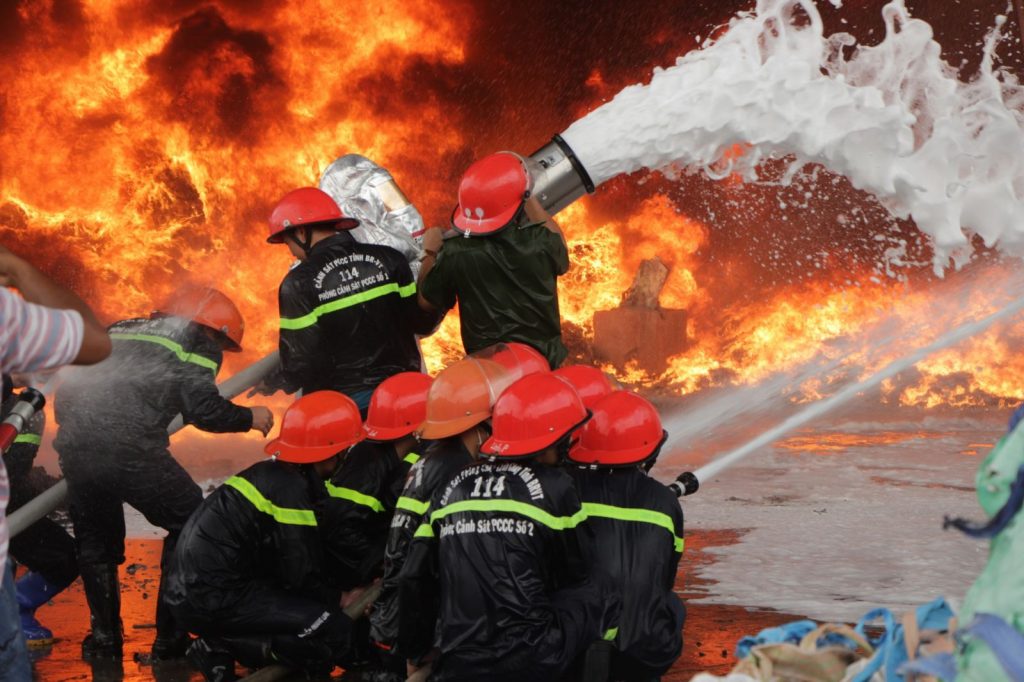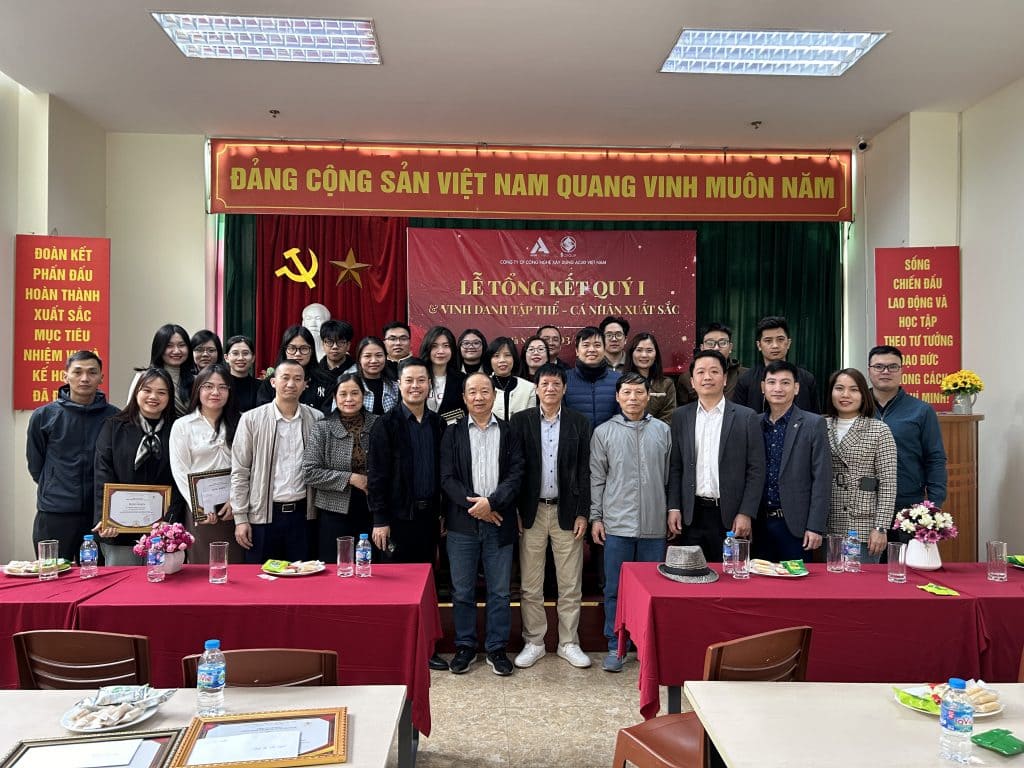Prime Minister Phạm Minh Chính Signs Decision No. 819/QĐ-TTg Approving the Firefighting and Prevention Infrastructure Plan for the 2021-2030 Period with a Vision to 2050
Each District-Level Administrative Unit Must Have At Least One Firefighting and Rescue Police Team
Under this plan, by 2030, the aim is to develop a synchronized and modern firefighting and prevention infrastructure that aligns with Vietnam’s conditions and meets the standards of advanced countries worldwide.
The plan seeks to integrate the firefighting and prevention infrastructure with the national technical infrastructure system; curb the increase in fire and explosion incidents; protect human lives, health, and property; safeguard the environment; and contribute to ensuring national security, public order, and social safety. Key objectives include:
Establishing a network of headquarters, barracks, and facilities dedicated to firefighting and prevention, with priority given to placing firefighting and rescue police units in urban areas and high-priority zones. Each district-level administrative unit must have at least one firefighting and rescue police team.
Investing in physical infrastructure, technical facilities, and emergency response buildings, as well as training centers, command centers, equipment inspection facilities, and scientific research on firefighting, prevention, and rescue. These measures aim to build a professional, skilled, and modern firefighting and rescue force.
Ensuring proper working and operational conditions for grassroots and specialized firefighting teams, as well as civil defense forces, in alignment with the sectoral, regional, and local development plans as stipulated by law.
Development of Synchronized Water Supply and Communication Systems for Firefighting and Prevention
Developing a synchronized water supply system for firefighting, ensuring adequate flow and pressure requirements as stipulated by firefighting standards and regulations, and maximizing the efficient use of water sources for firefighting operations.
Developing transportation infrastructure to meet firefighting and prevention requirements, gradually expanding and upgrading roads, streets, and alleys in residential areas to allow fire trucks to operate effectively during fire, explosion, or emergency incidents.
Ensuring communication systems support firefighting, prevention, and rescue operations; modernizing information infrastructure, command center systems, and data management systems related to firefighting and incident reporting. These systems must align with disaster response and search-and-rescue command systems and integrate with operational databases across ministries, sectors, and localities. Completing digital transformation and providing the highest-level public services in the firefighting and prevention field is also a key objective.
Prime Minister Phạm Minh Chính Signs Decision No. 819/QĐ-TTg Approving the Firefighting and Prevention Infrastructure Plan for the 2021-2030 Period with a Vision to 2050
Six Firefighting and Prevention Infrastructure Zones
The Decision outlines the Firefighting and Prevention Infrastructure Plan for 2030, including the zoning of firefighting and prevention infrastructure; the development of headquarters, barracks, and facilities serving firefighting and prevention; the development of water supply systems for firefighting; the development of transportation systems for firefighting; and the development of communication systems for firefighting and prevention.
Regarding the zoning of firefighting and prevention infrastructure, based on the National Master Plan and the specific characteristics of the firefighting and prevention sector, the infrastructure plan is divided into six zones.
Each zone will have central and key localities prioritized for investment to support other localities within the zone and adjacent areas when needed.
Development of Headquarters, Barracks, and Facilities for Firefighting and Prevention
Regarding the development of headquarters, barracks, and facilities for firefighting and prevention, the Decision specifies the construction of headquarters, barracks, and facilities for the Central Firefighting, Prevention, and Rescue Police Force, including:
- Headquarters of the Department of Firefighting, Prevention, and Rescue Police;
- National Command and Information Center for Firefighting and Prevention Operations, integrated with the implementation of the “Database Management System for Firefighting and Prevention and Emergency Incident Reporting”;
- Training and Response Centers for Firefighting, Prevention, and Rescue Operations (in the Northern, Central, and Southern regions);
- Research Institute for Firefighting, Prevention, and Rescue Science and Technology;
- Warehouses for Firefighting, Prevention, and Rescue Equipment;
- Maintenance and Repair Centers for Firefighting, Prevention, and Rescue Equipment (in the Northern, Central, and Southern regions);
- Vietnam Firefighting, Prevention, and Rescue Museum
- Upgrading, renovating, and constructing new headquarters, barracks, and facilities for teaching, training, and instructional activities at the University of Firefighting and Prevention.
At the local level:
-
- Build a network of headquarters, barracks, and facilities for provincial and district-level Firefighting, Prevention, and Rescue Police forces, with priority given to placing the headquarters of Firefighting, Prevention, and Rescue units in urban areas and key areas for fire prevention and firefighting. Ensure that each administrative district has at least one Firefighting and Rescue Police team.
- Invest in infrastructure, technical facilities, and structures to support emergency response, training, command and control, equipment inspection, and research in fire prevention, firefighting, and rescue technology, meeting the requirements for building a professional, elite, and modern Firefighting and Rescue Police force suitable for the functions, tasks, and operational scale of each unit and locality.
- Establish community education centers for fire prevention, firefighting, and rescue operations (located in the central areas of regions).
Pilot the establishment of volunteer Firefighting and Rescue teams.

In addition, the Decision specifies the construction of headquarters and facilities for specialized fire prevention and fighting forces, community fire prevention forces, and volunteer units.
Specifically, it includes the construction and arrangement of workstations for specialized fire prevention and fighting teams; ensuring operational conditions for local and specialized fire prevention teams in accordance with the planning and development directions of the sector, agency, and unit as prescribed by law.
It also involves the arrangement of workstations and ensuring operational conditions for the community fire prevention forces, appropriate to the scale and nature of activities in localities.
A pilot study will be conducted to establish and arrange operational locations for volunteer fire prevention, firefighting, and rescue teams in urban areas, residential areas, craft villages, and family-owned businesses providing services.
An investment of approximately 89.332 trillion VND is required for the construction of fire prevention and firefighting infrastructure.
The Decision specifies that the investment needs for fire prevention and firefighting infrastructure (network of headquarters, barracks, facilities; communication systems) for the Fire Prevention and Fighting and Rescue Police Force by 2030 is estimated at about 89.332 trillion VND. This will come from state budget funds, ODA (Official Development Assistance) funds, local support funds; revenue from mandatory fire and explosion insurance, voluntary contributions, donations from organizations and individuals, and other legal revenue sources as prescribed by law, with the majority coming from the state budget.
The investment capital required for fire prevention and firefighting infrastructure at ministries, sectors, and localities will be determined during the formulation and approval of specific projects by ministries, sectors, and localities, and will be mobilized from state budget funds, off-budget funds, and other legal revenue sources in accordance with the law.
Source: Government’s Electronic Portal






